Bull riding isn’t just a rodeo sport — it’s a test of courage, control, and endurance. Riders face one of the most powerful animals on earth, relying on both skill and the right protective gear to stay safe. Among all the essential items, Bull Riding Chaps stand out as both functional armor and a proud symbol of rodeo heritage.
These leather garments have evolved from traditional cowboy workwear into specialized, high-performance gear crafted for one of the toughest arenas in sports. This guide explores their purpose, design, safety role, material craftsmanship, and maintenance, helping you understand why no professional rider ever mounts a bull without them.
A Brief History: From Ranch Work to Rodeo Stage
Chaps trace their origins back to 19th-century cowboys who rode through rough terrain filled with brush, thorns, and barbed wire. Derived from the Spanish word chaparreras (for brushy terrain), they were designed to protect legs from natural hazards.
As the American rodeo grew in popularity, these protective garments were adapted for arena use. The design shifted from full-coverage riding gear to specialized bull riding chaps optimized for movement, balance, and style.
Today, they are both a symbol of Western heritage and a critical piece of safety equipment. While the classic silhouette remains unchanged, advancements in leather treatment, stitching techniques, and ergonomic design have turned them into high-performance gear for professional athletes.
The Purpose of Bull Riding Chaps
The main purpose of bull riding chaps is protection — plain and simple. But the layers of purpose run deeper than that.
When a bull rider climbs onto a 1,500-pound animal known for unpredictable strength, the risk of injury is immense. Bulls buck, kick, twist, and spin violently. Every movement can expose the rider’s legs to direct impact, friction burns, or entanglement. Bull riding chaps act as a second skin, shielding the legs from abrasions and helping the rider maintain mobility and control.
Beyond protection, chaps play a crucial functional and psychological role. They help riders slide off smoothly during a dismount or fall, preventing the dangerous possibility of getting caught on the bull’s hide or flank strap. The smooth leather surface reduces friction, allowing for a clean release if things go wrong.
Lastly, bull riding chaps embody professional pride. The craftsmanship, color, and design reflect not only safety needs but also personal expression. A well-made pair signals experience, tradition, and readiness to face the arena.
Detailed Breakdown: The Purpose of Bull Riding Chaps
- Primary Protection:
- Shields legs from direct impact, friction burns, and abrasions caused by the bull’s hide or flank rope.
- Reduces risk of cuts or bruising during close contact with the animal.
- Impact Resistance:
- Thick, full-grain leather absorbs shock from kicks and collisions.
- Reinforced areas on thighs and knees prevent deeper injuries.
- Friction Control:
- Smooth outer leather minimizes friction and skin irritation.
- Prevents rope burns or clothing snags caused by bull ropes or flank straps.
- Safe Dismount & Slide-Off:
- Chaps allow riders to slide cleanly off the bull without getting caught.
- Helps reduce dangerous drag situations after dismount or fall.
- Enhanced Mobility:
- Flexible leather moves naturally with the rider’s legs for better control.
- Prevents stiffness or restricted motion during fast maneuvers.
- Psychological Confidence:
- Well-made chaps give riders mental assurance of safety, promoting focus and composure.
- A confident rider reacts faster and performs more effectively under pressure.
- Professional Appearance & Tradition:
- Chaps are a visual symbol of rodeo professionalism and Western heritage.
- Intricate designs, color choices, and tooling express individuality and pride.
- Serve as part of a rider’s signature look in the arena.
- Durability & Long-Term Use:
- High-quality leather chaps withstand repeated impacts and harsh conditions.
- With proper maintenance, they can last many seasons of competition.
Key Design Features of Bull Riding Chaps
A pair of bull riding chaps is not just stitched leather — it’s a carefully engineered piece of protective apparel. Every element serves a purpose, from the choice of material to the placement of straps.
Material
The heart of any chap is its material. Genuine leather chap hide — typically cowhide, buffalo, or suede — is the preferred choice. Leather’s natural toughness resists tearing, while its flexibility allows it to move seamlessly with the rider’s body.
High-end chaps may use a combination of materials: softer inner linings for comfort and thicker outer layers for protection. Unlike synthetic alternatives, real leather also molds to the rider’s body over time, becoming uniquely fitted and more comfortable with every ride.
Construction and Reinforcement
Bull riding chaps are crafted with double-stitched seams and reinforced panels in high-stress areas like the inner thigh and knee. These reinforcements absorb shock during contact and extend the gear’s lifespan.
The waist and thigh closures are secured by adjustable buckles or conchos, often made from stainless steel or brass to resist corrosion. Many premium chaps include hidden padding or flexible inserts that add extra protection without sacrificing range of motion.
Fit and Adjustability
The perfect fit is essential for safety and performance. Chaps should sit snugly around the waist and legs without restricting movement. Riders rely on them to stay stable while shifting their weight during unpredictable motions.
Too loose, and the chaps could snag or slide out of place. Too tight, and they could limit leg control. Skilled craftsmen tailor each pair for the rider’s unique build to ensure comfort and secure fit.
Length and Fringe
Bull riding chaps typically extend from the waist to the top of the boot. This full-leg coverage ensures that the thighs, knees, and calves — the most exposed areas — are protected from friction burns and impact.
The fringe, a signature feature of Western chaps, isn’t just decorative. It helps deflect dirt, adds motion flair in the arena, and emphasizes the rider’s movements for spectators and judges.
Customization and Style
Modern rodeo culture places huge importance on individuality. Riders often personalize their chaps with tooled designs, embroidery, initials, or sponsor logos. These artistic touches tell stories — of family heritage, ranch branding, or personal achievements.
Despite the flashy appearance, these embellishments are applied without compromising durability. Every custom design must withstand the same level of stress and wear as any performance gear.
Safety and Performance Benefits
In bull riding, safety and control go hand in hand. Chaps enhance both by providing a critical balance between flexibility and defense.
- Impact Protection: The layered leather construction cushions against hits from the bull’s horns or hooves. Even when a rider gets thrown, the dense material absorbs much of the shock.
- Friction and Rope Burn Prevention: Smooth leather minimizes skin irritation caused by the bull rope, flank strap, or the bull’s hide.
- Mobility: Unlike rigid protective wear, chaps are designed to move fluidly, giving riders the freedom to shift, squeeze, and balance during fast maneuvers.
- Grip and Stability: The inner lining’s texture provides slight traction against jeans, helping riders maintain consistent leg positioning.
- Weather Resistance: Quality leather is naturally water-resistant and breathable, offering protection against dust, sweat, and temperature changes common in rodeo arenas.
In short, bull riding chaps transform raw leather into functional armor — protective enough to handle the power of a bull yet supple enough to respond to the rider’s every move.
Choosing the Right Bull Riding Chaps
Selecting the ideal pair of chaps is an investment in performance and safety. Here are the main factors to consider:
Material Quality
Always choose genuine leather. While synthetic versions may look similar, they can’t replicate the strength or flexibility of natural hide. Full-grain or top-grain cowhide is the most common and reliable option.
Comfort and Fit
Comfort affects concentration. A well-fitted pair should allow the rider to crouch, twist, and move freely. It’s wise to test them while wearing full rodeo attire, including jeans and boots.
Durability
Inspect the stitching, hardware, and lining. Reinforced seams, metal buckles, and thick leather panels are signs of craftsmanship. Poor stitching can fail under pressure — a risk no rider should take.
Custom Fit
Professional riders often order custom-made chaps. This ensures precise measurements and alignment of all fastening points. Custom builds can also include padding, ventilation, or stylistic details that enhance comfort and confidence.
Design and Personalization
Your chaps are part of your identity in the arena. Choose colors, fringe, and tooling that reflect your style. Many brands offer hand-tooled designs that highlight individuality without compromising function.
Maintenance and Leather Care Tips
Proper maintenance keeps Leather Chap strong, supple, and beautiful for years. Neglect, on the other hand, can cause the material to stiffen, crack, or lose protection. Follow these care practices:
- Clean After Every Ride: Wipe away dust, mud, and sweat with a damp cloth. Never use harsh detergents — they strip the leather’s natural oils.
- Condition Regularly: Apply a quality leather conditioner or balm every few weeks. This keeps the leather flexible and prevents drying or cracking.
- Avoid Excess Moisture: If chaps get wet, allow them to air dry naturally. Avoid direct heat, as it can cause the leather to shrink or warp.
- Proper Storage: Hang them on a wide hanger in a cool, dry place. Avoid folding them, which can cause permanent creases.
- Inspect Before Use: Check all straps, stitching, and buckles before each ride. Replace worn parts immediately to ensure safety and reliability.
Well-maintained chaps not only last longer but also perform better under pressure — a hallmark of any professional’s gear.
Conclusion
Bull riding chaps are more than protective clothing — they are an extension of the rider’s skill, confidence, and identity. They embody the perfect union of tradition, technology, and artistry. Every pair represents countless hours of craftsmanship and the rider’s unspoken pact with safety.
In the rodeo arena, there’s no room for compromise. Whether you’re a rising competitor or a seasoned professional, investing in high-quality leather chap ensures the comfort, safety, and performance you need to ride with confidence.
When the gate opens and the bull explodes into motion, you’ll be glad to have gear that’s as tough, resilient, and determined as you are.


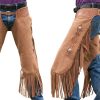
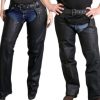
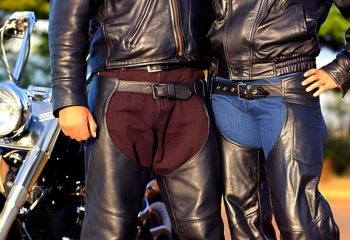
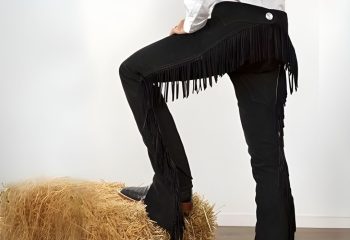
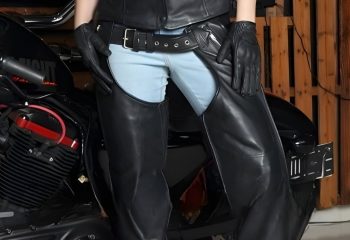
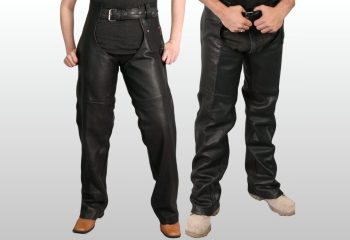
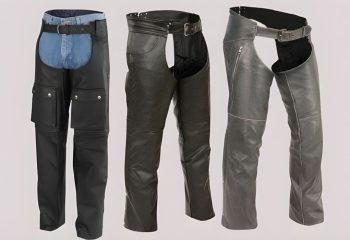
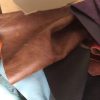
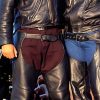
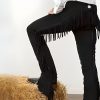
Recent Comments